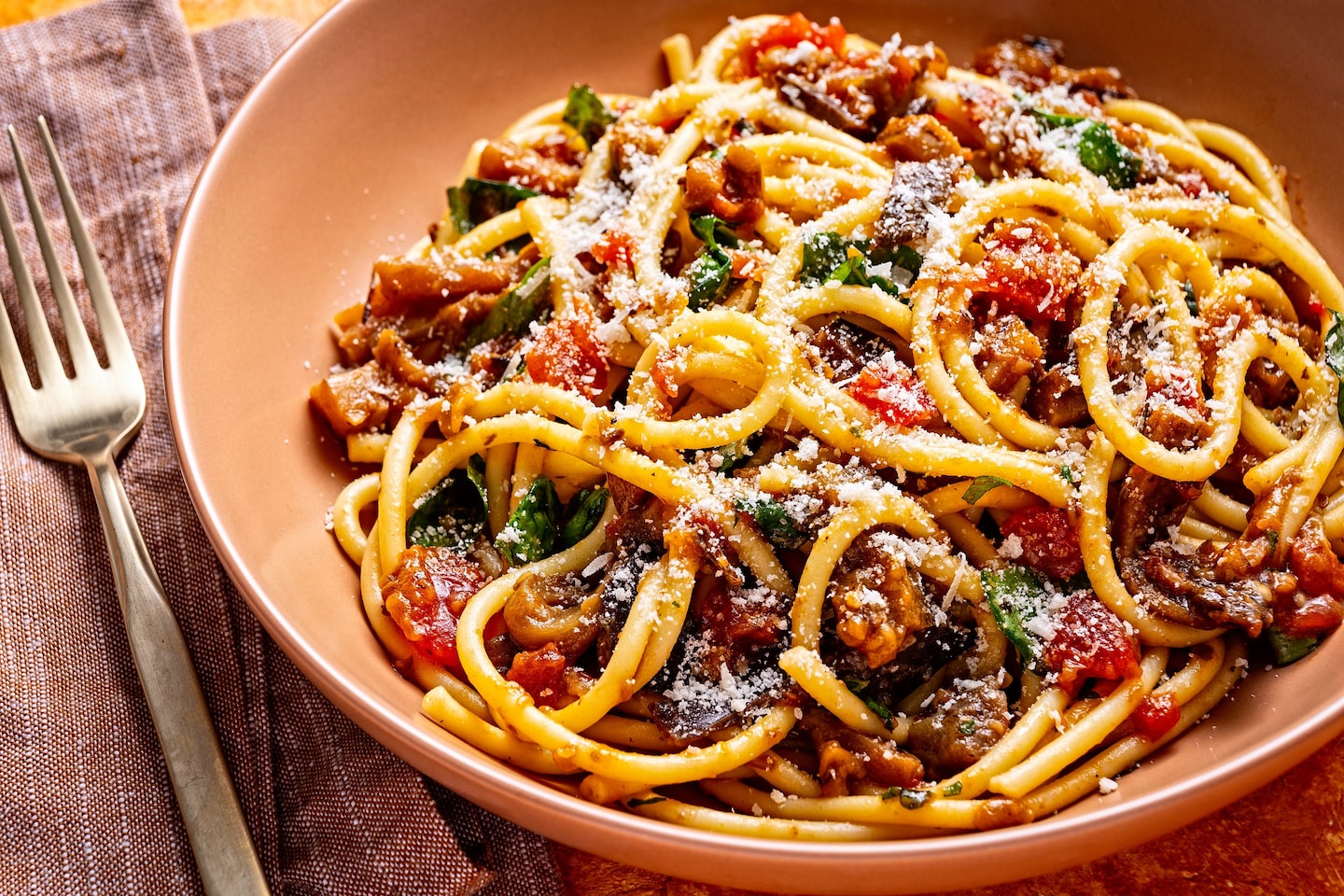
For a long time, eggplant was my white whale of summer produce. It was always delicious when I had it in restaurants, but I struggled to get the texture just right when cooking it at home. I suspect many others are in the same boat I was, and I’m here to tell you there’s hope. Recipes editor Becky Krystal wrote a helpful how-to guide all about the nightshade that is botanically a fruit but treated in cooking as a vegetable, answering common questions about salting, texture, cooking methods and more. Here’s a quick rundown of some of her top tips for mastering the art of cooking eggplant:
- Experiment with different varieties. Eggplants come in a range of shapes and hues, and you might find some kinds work better than others in certain recipes. You may be familiar with the larger, deep purple globe eggplants commonly found in the supermarket, but longer, thinner Asian varieties, such as Japanese and Chinese, are all wonderful, as are the smaller, denser Italian eggplant and the green, round Thai eggplant. Becky notes that although outward appearances may differ, “you won’t find much difference once you get to the flesh inside,” so don’t be afraid to switch things up.
- Use salt mindfully. Contrary to popular belief, salting the flesh of eggplant doesn’t help eliminate bitterness, but it can assist with drawing water out of the vegetable, allowing it to better soak up other flavors, not to mention seasoning it. Salting eggplant until it softens and wilts slightly can also prevent it from absorbing too much oil if you’re planning to make a stir-fry or something similar.
- Be cautious with oil. Eggplants can be wonderful sponges, which is great news when it comes to flavorful sauces, glazes and marinades, but it can make it tricky to navigate cooking them in oil. In “Keys to Good Cooking,” Harold McGee says you can avoid your eggplant soaking up lots of oil by briefly microwaving it or, as mentioned above, salting it and rinsing off any excess.
- Play with form. If you normally slice or cube eggplant, try leaving it whole (and vice versa). Strips and slices are great for layering in sandwiches or lasagnas, but be aware that eggplant flesh darkens quickly after it’s cut, so it’s best cooked right away. If you want to cook a whole eggplant, Becky says you can avoid explosions by pricking holes in the skin.
Now that you have all the information you need to create a delicious eggplant dish, try putting it to the test with a new recipe. Because the vegetable is so versatile, we’ve decided to highlight the many ways it can be prepared and encourage you to try a different technique. If you want to discover even more recipes that spotlight eggplant, search our archives of more than 10,000 tested and trusted recipes.
Pasta With Italian Sausage, Tomatoes and Eggplant
This one-pot wonder features a hearty sauce of tomato, eggplant and Italian sausage. Get the recipe.
Kaeng Khiao Wan Nuea (Green Curry With Beef and Thai Eggplant)
Round Thai eggplants are the star of this saucy curry. Get the recipe.
